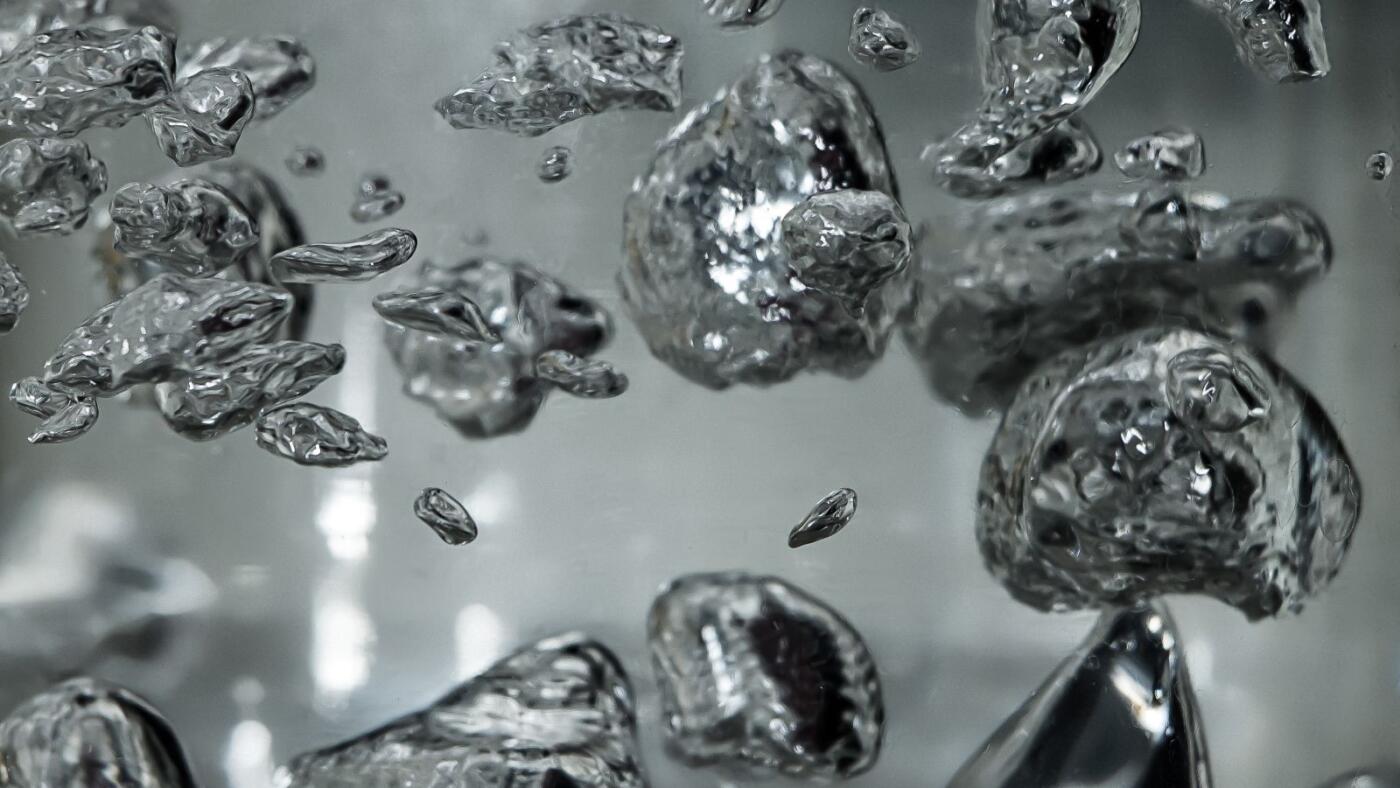Mercury Fundamentals
Mercury is a naturally occurring, highly adaptable and dense chemical element found in the earth’s crust. The element is identified as “Hg” on the periodic table and has an atomic number of 80. Mercury is a liquid and has a measurable vapor pressure at room temperature. Droplets of liquid mercury are shiny and silver-white with a high-surface tension, appearing rounded when on flat surfaces. The element expands at high temperatures and contracts at low temperatures.
Mercury exists in three main chemical forms:
- Elemental (metallic): elemental mercury is the pure element that has not reacted with another substance. It exists as a shiny, silver-white metal liquid (quicksilver) and when exposed to room temperatures, can evaporate to form an invisible, odorless toxic vapor.
- Inorganic: inorganic mercury occurs abundantly in the environment, primarily as cinnabar and metacinnabar and as impurities in other minerals. Mercury in an inorganic form readily combines with chlorine, sulfur and other elements to form inorganic salts or compounds.
- Organic: organic mercury occurs when inorganic mercury salts become attached to airborne particles. Methylmercury is the most common organic mercury compound and is highly toxic.
Mercury in the Environment
Mercury occurs in the environment by natural and anthropogenic pathways. Naturally, mercury occurs in the environment by volcanic activity, weathering of rocks, forest fires and the evaporation stage of the water cycle. Anthropogenically, mercury occurs from the burning of fossil fuels (coal), cement production, mining, manufacturing of medicinal products, waste incineration and mining of gold and mercury.
Atmospheric deposition is the dominant mechanism for the presence of mercury in the biosphere. Once in the atmosphere, mercury is widely distributed and can circulate for years. Several factors determine the range across which mercury is transported, including:
- weather
- the form of mercury emitted
- the location of the emission source
- the height from which the mercury is released and
- the surrounding terrain.
Atmospheric lifetimes of inorganic elemental mercury are estimated to be up to two years, while organic methylmercury can stay in soils for decades.
Mercury emitted into the air eventually deposits into water or onto land. Once deposited, it can be changed into methylmercury by fish, shellfish and animals that eat fish. Mercury persists in the environment for long periods by cycling back and forth between the air and soil, all while changing chemical forms.
How Mercury is Used Day-to-Day
Three main physical properties make mercury of special interest for human usage: high surface tension, high density and its metallic elemental state. Today, mercury is used in all three chemical forms across the world:
- Elemental mercury: used in thermometers, barometers, pressure-sensing devices, batteries, fluorescent bulbs, industrial processes, refining, lubrication oil and dental fillings.
- Inorganic mercury: used in photography, topical antiseptic and disinfectant, wood preservative and fungicide.
- Mercuric sulfide: used to color paints and is one of the red coloring agents used in tattoo dyes.
- Organic mercury: used in fluorescent lights, batteries and polyvinyl chloride.
The Human Health Impacts of Mercury
All forms of mercury are toxic to humans and each exhibit different health effects. The most common exposure pathways for mercury are ingestion and inhalation. Humans may be exposed to mercury by eating fish and shellfish that have high levels of methylmercury in their tissues or breathing mercury vapor that is released from a container or a product/device that breaks. Phenyl mercury acetate and ethyl mercury, other forms of mercury, have been commonly as fungicides, preservatives, antiseptics and disinfectants. Factors that can determine whether health effects occur and their severity, include:
- the type of mercury
- the dose
- the age or developmental stage of the person exposed
- the duration of exposure and
- the route of exposure
Acute exposure to inorganic mercury can cause irritation to the skin and eyes, a metallic taste in the mouth, nausea and vomiting. Acute exposure of elemental mercury can cause inflammation of the lungs (chemical pneumonitis), difficulty breathing or shortness of breath (dyspnea), chest pain and dry cough. Organic mercury, most toxic as methylmercury, can cause tremors, impaired cognitive thinking, impairment to vision and hearing and slow nerve function after both acute and chronic exposures. Exposure to methylmercury among fetuses and young children can result in severe developmental effects.
Mercury and Remediation
During environmental investigations and remediation of mercury-impacted media, appropriate personal protective equipment (PPE) is to be utilized to minimize the risk of exposure. Proper PPE for mercury investigations and/or remediation include disposable cover boots, disposable coverall suit, safety glasses, nitrile gloves and respiratory protection.
Upon identification of a release, the source material must be mitigated immediately to minimize the spread of mercury. Due to high-surface tension, once spilled, mercury breaks into droplets that can easily spread and build up in crevices and cracks. When liquid mercury is exposed to temperatures above -38 F°, the liquid vaporizes, producing an odorless and invisible vapor, causing elevated levels of mercury in indoor air. Proper remediation of mercury releases is critical to maintaining a safe indoor air environment for human health.
During mercury remediation, air monitoring is performed using mercury vapor analyzers to determine the parts per million and/or parts per billion of mercury vapors present within indoor air. After initial indoor air readings are collected, all surfaces within the release area are cleaned with mercury recovery vacuums and high-efficiency particulate air (HEPA) vacuums to remove mercury from impacted surfaces. All impacted porous materials within the release area are generally removed and containerized. When mercury remediation is ongoing, negative air scrubbers, exhaust fans and ventilation heaters are utilized to aid in minimizing airborne mercury within the release area.
Following initial surficial cleaning and mopping of impacted surfaces is performed using a mercury decontaminant (HgX or “merc soap”). Remediation contractors typically perform multiple rounds of mopping and cleaning to ensure that the mercury has been properly remediated. All solid waste mercury and impacted materials, including items such as PPE and porous materials, are containerized, transported and properly disposed of at an offsite location. After remediation is completed, post-remediation sampling is performed by collecting indoor air readings and sometimes collecting surface samples. If post-remediation samples are within applicable regulatory standards, then the release area can be reoccupied and remediation is deemed complete.
HOW CAN VERTEX HELP?
VERTEX employs a team of environmental insurance professionals who can investigate the cause, origin, and timing of pollution events associated with mercury-related releases. Do you have a mercury related claim that is not progressing to closure? VERTEX’s claim management services can also help move remedial projects forward to regulatory closure in a timely and cost-effective manner.
In addition to our environmental insurance claims management services, VERTEX also has a team of experienced environmental professionals that can perform Phase I Environmental Site Assessments and/or Phase II Environmental Site Assessments.
To learn more about VERTEX’s Environmental Consulting services or to speak with an Environmental Expert or myself, email hglaze@vertexeng.com, call 888.298.5162 or submit an inquiry.
AUTHOR: HAYLEY GLAZE





